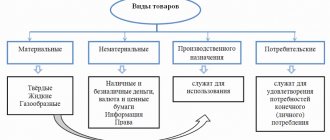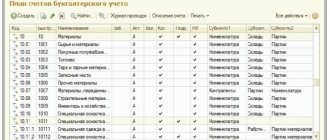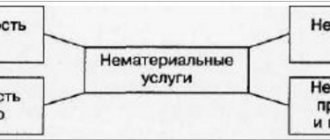Reflecting transactions with penalty amounts in the accounting of government institutions has its own characteristics depending on their type and traditionally raises many questions among accountants.
No time to read? Cheat sheet on the contents of the article:
- What is the difference between the concepts of “forfeit”, “fine” and “penalty”
- What legislation regulates the payment of penalties?
- 3 ways to collect penalties
- What transactions should be used to charge penalties to state-owned, budgetary and autonomous institutions?
- What indicators are reflected in the reporting forms?
What is a penalty
In accordance with the Civil Code of the Russian Federation, a penalty is a sum of money that the debtor is obliged to pay to the creditor in the event of non-fulfillment or improper fulfillment of an obligation, in particular, for its delay (Article 330). Moreover, the agreement on the penalty must be made in writing, regardless of the form of the main obligation, otherwise it is declared invalid (Article 331).
There are two types of penalties: a fine or a penalty. The fine is a fixed payment and can either be specified as a fixed amount or calculated as a percentage of a particular amount. The penalty is a variable value, its size depends on the duration of the period of violation. The amount of the penalty is determined as a percentage of the amount of the obligation, the fulfillment of which it ensures.
The rules for calculating penalties are also determined by the Civil Code of the Russian Federation. The first day of delay is the date following the day of fulfillment of the obligation in accordance with the contract. Last day is the date preceding the day of actual fulfillment of the obligation.
Example.
According to the terms of the contract, the deadline for fulfillment of obligations by the supplier (contractor) is defined as follows: “no later than June 20, 2021.” The goods were actually delivered on July 20, 2021. The period of delay lasted from June 21 to July 19 and amounted to 29 days.
Types of existing penalties
Before considering the question of how to post a fine or penalty in accounting, let’s figure out what sanctions of this kind may be. They are divided into two groups:
- Accrued by counterparties to each other in connection with violation of contractual obligations.
- Arising in case of non-compliance with tax legislation.
Sanctions of the first group are provided for in the texts of agreements concluded between counterparties as mutual and can equally arise for each of the parties. For example, penalties are usually established for the buyer for late payment, and for the supplier for failure to meet the delivery deadline. More serious sanctions (in the form of a fine) are intended to ensure the fulfillment of obligations that seriously affect the very fact of the functioning of the counterparty or lead to significant losses for it (including due to failure to fulfill obligations to a third party). The amount of sanctions arising between counterparties is indicated in the contract either directly (such as the amount of interest for each day of delay in payment or delivery) or by describing the calculation algorithm.
Situations in which penalties and fines are assessed for violations of tax legislation are given in the Tax Code of the Russian Federation; there are also indications of their specific amounts, and, in necessary cases, calculation algorithms. Here, taxpayers usually become the payers of sanctions, although in a number of cases (for example, a delay in the return of overpaid tax to the budget or the amount of VAT to be refunded), the same kind of responsibility is established for the tax authorities.
Thus, a specific legal entity may turn out to be both a payer and a recipient of payments from both groups, and accounting entries for fines and penalties will arise not only when accounting for expenses on them, but also when reflecting income.
Penalty when purchasing services
In addition to the Civil Code of the Russian Federation, the concept of a penalty, the procedures for its calculation and collection when purchasing services for state (municipal) needs are defined in Art. 34 “Contract” of Federal Law No. 44-FZ (hereinafter referred to as the Law). According to clause 4, securing the responsibility of the customer and supplier (contractor, performer) for non-fulfillment or improper fulfillment of obligations under the contract is a mandatory condition of the contract. Clause 6 contains requirements for the payment of penalties in case of delay in fulfilling obligations and in other cases of non-fulfillment (improper fulfillment) of obligations.
However, the Law also provides for a number of exceptions when the above requirements may not apply (Clause 15, Article 34). Exceptions include purchases from a single source, for example, for an amount not exceeding 100,000 rubles, or goods, works or services related to the scope of activity of natural monopolies.
According to the Law, in certain cases, in the manner prescribed by the Government of the Russian Federation, it is possible to grant a deferment in the payment of accrued amounts of penalties or to write them off. One of the criteria required for write-off is the size of the total amount of unpaid penalties. It should not exceed 5% of the contract price.
Accounting entries of a government institution
The government agency acquired material supplies to carry out its activities. When purchasing these inventories, the amount of VAT specified by the supplier is allocated for offset in the amount of 18,000 rubles.
State institutions include state (municipal) institutions that provide state (municipal) services, perform work and are engaged in the performance of state (municipal) functions in order to implement the powers of state bodies provided for by the legislation of the Russian Federation. The activities of a government institution are financed from the budget based on the budget estimate.
We recommend reading: How to fill out the 3rd personal income tax declaration for 2019 when buying an apartment
Methods for collecting penalties
In the terms of the contract (agreement), it is recommended to immediately specify the method of collecting the penalty. There are three ways:
- Request payment of the penalty from the contractor.
In this case, the obligations under the contract are paid in full and the security amounts (funds at temporary disposal) are returned. The counterparty can either transfer the amount of the penalty to the personal or current account of the institution, or deposit cash into the cash desk within the limit established by the Central Bank of the Russian Federation - 100,000 rubles. - Transfer payment under the contract in the amount reduced by the amount of the penalty.
- Withhold the penalty from the amount of security for the execution of the contract (funds at temporary disposal).
Separately, it should be said about the right to dispose of received funds, which depends on the type of institution.
In paragraph 3 of Art. 41 of the Budget Code of the Russian Federation, a penalty is included in non-tax budget revenues from liability measures for violating the terms of a civil transaction. Amounts received by a government institution are accordingly subject to inclusion in budget revenues.
Budgetary or autonomous institutions have the right to spend the amounts received in accordance with the FCD Plan, since such receipts are their non-operating income. It is only necessary to make timely changes in the prescribed manner to the FCD Plan, increasing the total amounts of receipts and disposals and determining the directions of expenditure.
Penalties for electricity wiring
And if you consider that the Ministry of Finance has never taken an unambiguous approach to this problem, then you can get confused quite easily. The author analyzes the recommendations of the Ministry of Finance, noting controversial points in the position of financiers.
The documents provided regarding the need to pay penalties must contain all the necessary details. A commercial organization is not required to comply with any special unified form of these primary documents. However, in accordance with Part 2 of Art. 9 of the Federal Law of December 6, 2021 No. 402-FZ “On Accounting”, the primary accounting document must contain the following mandatory details: name of the document; date of document preparation; name of the economic entity that compiled the document; content of the fact of economic life; the value of the natural and (or) monetary measurement of a fact of economic life, indicating the units of measurement; the name of the position of the person(s) responsible for the correct registration of the event; signatures of persons indicating their surnames and initials or other details necessary to identify these persons.
Reflection of transactions in accounting
The accrual of the presented amounts of penalties (fines, penalties) is documented by posting
D-t (KDB) X. 209.40. (560) or
(KDB) X. 205.41. (560)
Kit (KDB) X. 401.10. (140)
Where X is the source of financial support depending on the type of institution (1 – state-owned, 2 – budgetary, autonomous).
The program uses the document “Accounting operation (manual)”
.
Correspondence regarding the receipt of the collected penalty in accordance with Instructions No. 162n, No. 174n and No. 183n should be reflected in accounting depending on the type of institution.
Correspondence in a government agency
Upon receipt of payment of the penalty from the supplier of correspondence in a government institution, the following will occur:
- Depositing cash.
1.1cash was credited to the institution's cash desk.
D-t (KIF) 1. 201.34. (510) / 17.34 (140) Kt (KDB) 1. 209.40. (560) or
(KDB) 1. 205.41. (560)
In “1C”: document “Cash receipt order” with the type of operation “Receipt of funds for compensation of damage (209)” or “Other cash receipts d/s”.
1.2
cash issued for crediting to budget revenue:
D-t (KIF) 1. 210.03. (510) / 17.30 (510) Kt (KIF) 1. 201.34. (610) / 17.34 (610)
In “1C”: document “Cash outflow order” with the type of operation “Cash transfer to account No. 40116 (210 03)” or “Other cash withdrawals”.
- Crediting funds to budget income.
The set of transactions and accounting entries depends on whether the institution is vested with the authority of a revenue administrator or not.Option 1
: The institution has administrator powers.
2.1.1.
crediting funds directly to the administrator's account (04).- cash from the cash register: D-t (KDB) 1. 210.02 (140) K-t (KIF) 1. 210.03. (610) / 17.30 (610) or
non-cash from the supplier (contractor): D-t (KDB) 1. 210.02 (140) K-t (KDB) 1. 209.40. (560) or
(KDB) 1. 205.41.
(560) In “1C”: document “Cash Receipt”.
2.1.2.
crediting funds to income with a “transit” reflection in the PBS account (03) as a restoration of cash expenses.
In fact, the “transit” of non-tax income (penalty) contradicts paragraph 3 of Art. 41 of the Budget Code of the Russian Federation, since receipts to the personal account of the recipient of budgetary funds are reflected according to the Budget Code of Expenses.
- crediting cash from the cash register: D-t (KRB) 1. 304.05 (ХХХ)
K-t (KIF) 1. 210.03.
(610) / 17.30 (610) or - crediting non-cash payments from the supplier (contractor): D-t (KRB) 1. 304.05 (ХХХ)*
K-t (KDB) 1. 209.40.
(560) or
(KDB) 1. 205.41.
(560) In “1C”: document “Cash Receipt”. - transfer of funds to budget revenue to your personal administrator account: D-t (KDB) 1. 210.02 (140) K-t (KRB) 1. 304.05 (ХХХ)* In “1C”: document “Application for cash expenses” or “ Cash receipts."
Where XXX depends on the codes by which payment is made under the contract.
Option 2
: The institution is not vested with the powers of a revenue administrator.
2.2.1.
crediting funds from the supplier directly to the administrator's account (04).
- notification to the cash receipts administrator about the expected receipt of income. The basis is the Notice f. 0504805, sent to the revenue administrator: D-t (KDB) 1. 304.04 (140) K-t (KDB) 1. 303.05. (730)
- receipt of income to the budget. The basis is the Notice received from the cash receipts administrator: D-t (KDB) 1. 303.05. (830) Kit (KDB) 1. 209.40. (560) or
(KDB) 1. 205.41. (560)
2.2.2.
crediting funds from the personal account of the recipient of budget funds.
- crediting to the institution's personal account from the supplier (contractor): D-t (KRB) 1. 304.05 (ХХХ) K-t (KDB) 1. 209.40. (560) or
(KDB) 1. 205.41.
(560) In “1C”: document “Cash Receipt”. - transfer of received amounts from the personal account of the recipient of budget funds to the account of the income administrator: D-t (KDB) 1.303.05 (830) K-t (KRB) 1.304.05 (ХХХ) In “1C”: document “Application for cash expenses” .
- notification to the cash receipts administrator about the expected receipt of income. Reason – Notification f. 0504805, sent to the revenue administrator: D-t (KDB) 1. 304.04 (140) K-t (KDB) 1. 303.05. (730)
Correspondence in a budgetary (autonomous) institution
- Receipt of cash.
1.1.to the institution's cash desk:
D-t (KIF) 2. 201.34. (510) / 17.34 (140) Kit (KDB) 2. 209.40. (560) or
(KDB) 2. 205.41.
(560) In “1C”: document “Cash receipt order”.
1.2.cash deposited to the personal account:
D-t (KIF) 1. 210.03.
(510) / 17.30 (510) Kt (KIF) 1. 201.34. (610) / 17.34 (610) In “1C”: document “Cash expenditure order”. - Receipt of amounts to the personal account in OFK.
2.1cash:
D-t (KIF) 2. 201.11 (510) / 17.01 (KOSGU 510) K-t (KIF) 2. 210.03.
(610) / 17.30 (610) In “1C”: document “Cash receipt”.
2.2.transfer from the supplier (contractor) to the institution’s account:
Dt (KIF) 2.201.11 (510) / 17.01 (KOSGU 140) Kt (KDB) 2. 209.40. (560) or
(KDB) 2. 205.41.
(560) In “1C”: document “Cash Receipt”.
How to reflect the accrual and payment of tax penalties and fines in accounting
The basis for making entries for penalties or fines assessed for payment to the budget are documents with the amounts of these payments issued by the tax authority:
- decisions based on the results of the audit;
- requirements for payment of taxes (contributions).
For the taxpayer, they represent an expense that must be reflected on account 99 or account 91, depending on the type of tax.
For which taxes the Ministry of Finance requires penalties and interest to be reflected on account 99, and for which on account 91, find out from the Typical Situation from ConsultantPlus by receiving a free trial access.
The corresponding account for tax sanctions will be account 68, in which both penalties and fines should be allocated for each tax (contribution) in the analytics.
The accrual of sanctions in favor of the tax authorities will thus be reflected by the entry Dt 99 (91) Kt 68, and the entry for payment of fines or penalties will look like this: Dt 68 Kt 51.
If the payer of sanctions against a legal entity turns out to be a tax authority, then the accounting entries in this case will be similar to those used when calculating similar payments arising under contractual relationships with other counterparties:
- Dt 76 Kt 91 - accrual of income under sanctions;
- Dt 51 Kt 76 - receipt of funds for their payment.
The Chart of Accounts does not provide for the attribution of such income to account 99. The use of account 91 in this posting indicates the preference for reflecting tax sanctions paid by the taxpayer through account 91, since this provides a more convenient comparison of income and expenses.
To pay under the contract
In the case under consideration, the resulting counterclaim (penalty) presented to the supplier (contractor) is counted towards payment of the institution’s obligations under the contract.
When choosing this calculation method, a government institution must take into account several factors:
- It is advisable to include in the contract a condition that the fulfillment of obligations to transfer the penalty to budget revenue is assigned to the state customer;
- transfer the penalty yourself to budget revenue (the name of the counterparty for whom the penalty is transferred should be indicated in the payment document);
- make changes to the indicators of the budget obligation taken into account by the FC body.
It should be noted that the Budget Code of the Russian Federation does not provide for the execution of the budget by income by offsetting expenditure obligations (Article 218 of the Budget Code of the Russian Federation).
Correspondence in a government agency
- Reflection of amounts of obligations under the contract:
D-t (KRB) 1. 401.20 (ХХХ) or1.106.ХХ (310) Kit (KRB) 1. 302.ХХ (730)
- Reducing the amount of obligations by the amount of the penalty:
D-t (KRB) 1. 302.ХХ (830) K-t (KDB) 1. 209.40. (560) or(KDB)1. 205.41. (560)
- Transfer of withheld amounts of penalties to budget revenue:
D-t (KDB) 1. 210.02 (140) or(KDB) 1.303.05 (830) K-t (KRB) 1.304.05 (ХХХ) – code according to which execution is provided.
Correspondence in a budgetary (autonomous) institution
Let's consider a separate case when the contract is executed at the expense of subsidies allocated for other purposes (capital investments) and located in a separate personal account of the institution.
- Transfer of funds under the contract (minus the amount of the penalty):
D-t (KRB) 5 (6). 302.ХХ (830) Kt (KIF) 5 (6). 201.11 (610) / 18 (code KOSGU XXX) - Termination of counterclaim:
D-t (KRB) 5 (6). 302.ХХ (830) Kt (KRB) 5 (6). 304.06 (730) - Termination of counterclaim in the amount of the fulfilled claim under sanctions:
D-t (KRB) 2. 304.06 (830) K-t (KDB) 2. 209.40. (560) or(KDB) 2. 205.41. (560)
- Transfer of the amount of the penalty from a separate personal account to an account for accounting for transactions with institutional funds:
Dt (KRB) 5(6). 304.06 (830) K-t (KIF) 5(6). 201.11 (610) / 18 (KOSGU code XXX expenses) – disposal of funds from a separate personal account 21 (31).D-t (KDB) 2. 201.11 (510) / 17 (KOSGU code 140) – receipt of funds to the funds transactions account 20 (30). Kit (KRB) 2. 304.06 (730)
Correspondence regarding the termination of the counterclaim is reflected (based on certificate f. 0504833).
Postings for penalties for electricity in 2021 budgetary organization
Our HOA uses the simplified tax system “income minus expenses.” An agency agreement has been concluded with the residents, so we do not accept either utilities or the maintenance of common property as income. From January 2021, it was decided to charge penalties for non-payment or late payment only for the maintenance of common property.
Guilty party Recipient Operation Dt 91.2 Kt 76.2 Dt 76.2 Kt 91.1 Penalty by court decision - accounting entries are recorded on the basis of the title document Dt 76.2 Kt 51 Dt 51 Kt 76.2 Penalty under the contract (entries) is listed
Deduction from contract security amounts
Correspondence in a government agency.
- Receipt of funds at temporary disposal (security under the contract):
D-t (KIF) 3. 201.11 (510) K-t (KBC) 3. 304.01 (730) - Transfer of penalties from a personal account to account for funds in temporary disposal to budget revenue:
D-t (KBC) 3. 304.01 (830) K-t (KIF) 3. 201.11 (610) - Receipt of penalty amounts to the administrator's personal account:
D-t (KDB) 1. 210.02 (140) K-t (KDB) 1. 209.40. (560) or (KDB) 1. 205.41. (560)
Correspondence in a budgetary (autonomous) institution.
Writing off in accounting the amounts of penalties from funds in temporary disposal and reflecting them as income:
D-t (KBC) 3. 304.01 (830)
Kit (KIF) 3. 201.11 (610)
D-t (KIF) 2. 201.11. (510) / D-t 17.01 (KOSGU 140)
Kit (KDB) 2. 209.40. (560) or
(KDB) 2. 205.41.
(560) The basis for transactions are documents confirming that the security remains with the institution:
- notification of clarification of client operations (f. 0531852) sent to OFC
- accounting certificate (f.0503833)
Penalty from the buyer for violating the delivery deadline for wiring and VAT! Help me please!
Decisions of the arbitration court enter into legal force one month after their adoption, unless an appeal has been filed (clause 1 of Article 180 of the Arbitration Procedure Code of the Russian Federation). Consequently, the reflection of penalties for violation of contractual obligations based on a court decision in accounting should occur in the reporting period when a month has passed from the date of the decision of the arbitration court. Amounts of claims (claims) submitted that are not recognized by the payer (not awarded by the court) are not accepted for accounting. Penalties collected from counterparties for non-compliance with contractual obligations, in amounts recognized by payers or awarded by the court, are reflected in the following entries: - debit 76-2 “Settlements on claims” credit 91-1 “Other income”: penalties recognized by the debtor or awarded by the court; — debit 51 credit 76-2: penalties received.
Write-off of penalty amounts
A decrease in the amount of accrued income when a penalty is written off on the grounds provided by the Government of the Russian Federation in accordance with the Instructions is reflected:
D-t (KDB) X
. 401.10 (174)
Kit (KDB) X
.
209.40. (560) or
(KDB)
X*
. 205.41. (560)
Where X is the source of financial support depending on the type of institution (1 – state-owned, 2 – budgetary, autonomous).
Account 401.10.174 “Lost income” was included in the Accounting Instructions by Order of the Ministry of Finance of the Russian Federation dated November 16, 2016 No. 209n (came into force on December 5, 2016).
Deciding on the type of fine
In order to determine the accounting procedure for a fine, it is necessary to clarify its nature. So, for example, a fine assessed for violation of tax legislation in accordance with the norms of the Tax Code of the Russian Federation is reflected in profits and losses in account 99 “Profits and losses” (Order of the Ministry of Finance dated October 31, 2000 No. 94n):
Debit account 99 – Credit account 68 “Calculations for taxes and fees”
And if this is a fine payable for violating the terms of a business agreement or a fine accrued in connection with a violation of the norms of the Code of Administrative Offenses of the Russian Federation, then it will be reflected as part of other expenses (clause 11 of PBU 10/99).
Accordingly, the accrued fine receivable for violation of contractual terms will be recognized as other income (clause 7 of PBU 9/99, Order of the Ministry of Finance dated October 31, 2000 No. 94n):
Debit of account 76 “Settlements with various debtors and creditors”, subaccount “Settlements on claims” - Credit of account 91 “Other income and expenses”
Reflection of indicators in reporting forms
The composition of the data and the list of reporting forms for reflecting settlements with the counterparty for penalties, including the status of settlements, the amounts of accrued income and their cash execution are given in Table 1.
Table 1
| Reflected indicator | Reporting forms | |
| budgetary and autonomous institutions | government institutions | |
| Amounts of debt at the beginning and end of the period and indicators of its change - increase/decrease (according to settlement accounts - 209.40 or 205.41) | “Information on accounts receivable and payable” Columns 2-14 (except for columns 6 and  | |
| "Balance…" | ||
| Lines 580 or 590, columns 5, 9 | Lines 580 or 590, columns 3, 6 | |
| “Report on the financial results of the institution” | ||
| Lines 481, 482, column 6 | Lines 481, 482, column 4 | |
| Amounts of accrued income (account 401.10) | “Report on the financial results of the institution” | |
| Column 6 line 050 | Column 4 line 050 | |
| “Certificate on the conclusion by an institution of accounting accounts for the reporting financial year” | “Certificate on the conclusion of budget accounts for the reporting financial year” | |
| Counts: 5, 18, 13 | Counts: 3, 4, 7 | |
| Amounts of income received to the cash desk, to the personal or current account of the institution (according to the relevant accounting accounts) | “Report on the institution’s implementation of its financial and economic activity plan” | “Report on budget execution...” |
| Line 010, columns 5, 6, 7 | Line 010, columns 5 (6) | |
| "Cash Flow Statement" | ||
| Line 060 column 4 | ||
If transactions are correctly reflected in accounting in “1C: Public Institution Accounting 8”, the above indicators in the reporting forms are filled out automatically using the “Fill”
.
A budgetary institution should pay special attention when carrying out operations to fulfill planned income assignments without cash flow. An example is the transfer of payment under the contract in an amount reduced by the amount of the penalty. In accordance with the requirements of Instruction No. 33n, in this case, the amount of income must also be reflected in the Income section of the “Report on the institution’s implementation of its financial and economic activity plan (form 0503737)” in column 8.








